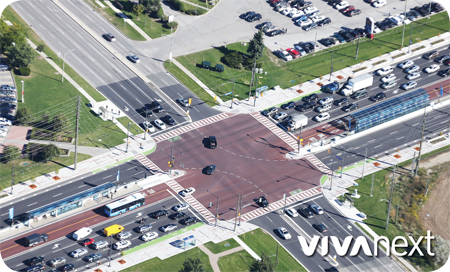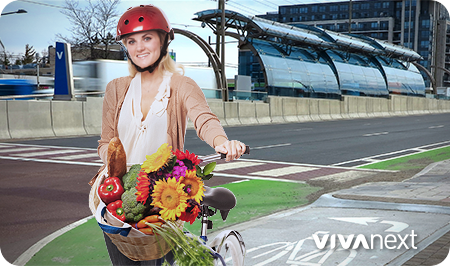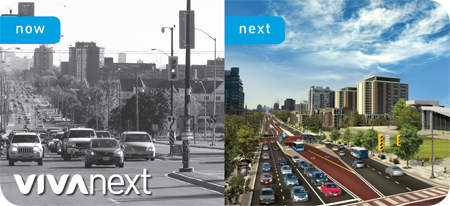As I’ve discussed in a previous blog, huge infrastructure projects involve the cooperation and organization of many parts. Fast, reliable transit systems are not built overnight. Years of design and planning go into a project before construction even begins. You might feel like construction in the vivaNext corridors is never-ending, but remember that these are important transit investments that, in the long term, will drive positive change in our communities.
The plan to promote awareness in the City of Markham was initiated back in the fall of 2001 with the “Great Transportation Debate,” which drew attention to the need for a rapid transit system in York Region. Fast-forward 13 years later to today, where the first section of rapidway is open on Highway 7 and the rest of the ambitious vivaNext projects are well underway.
World renowned environmentalist David Suzuki mentioned our project in a recent article, calling it an “impressive BRT network with rapid transit corridors for a fleet of modern and comfortable fast buses.” He pins the success of the world’s leading cities like New York on government investments in transportation solutions, from light rail and subways to bus rapid transit networks, so it’s exciting to know that cities in York Region are heading in this direction.
VivaNext’s success has been recognized by others as well: earlier this year it was awarded Project of the Year by the Ontario Public Works Association, for a transportation project valued greater than $50 million. The honour is granted to an organization that promotes excellence in the management and administration of public works projects by recognizing the coordination between managing agency, the consultant, architect, engineer, and the contractor.
Also, the York Region Chapter of the Professional Engineers of Ontario chose vivaNext as Engineering Project of the Year. It’s gratifying to have our commitment to excellence and dedication to the vision for York Region recognized by top industry professionals.
With summer construction season well underway, we thank you for your patience as these “impressive” infrastructure projects get built.










